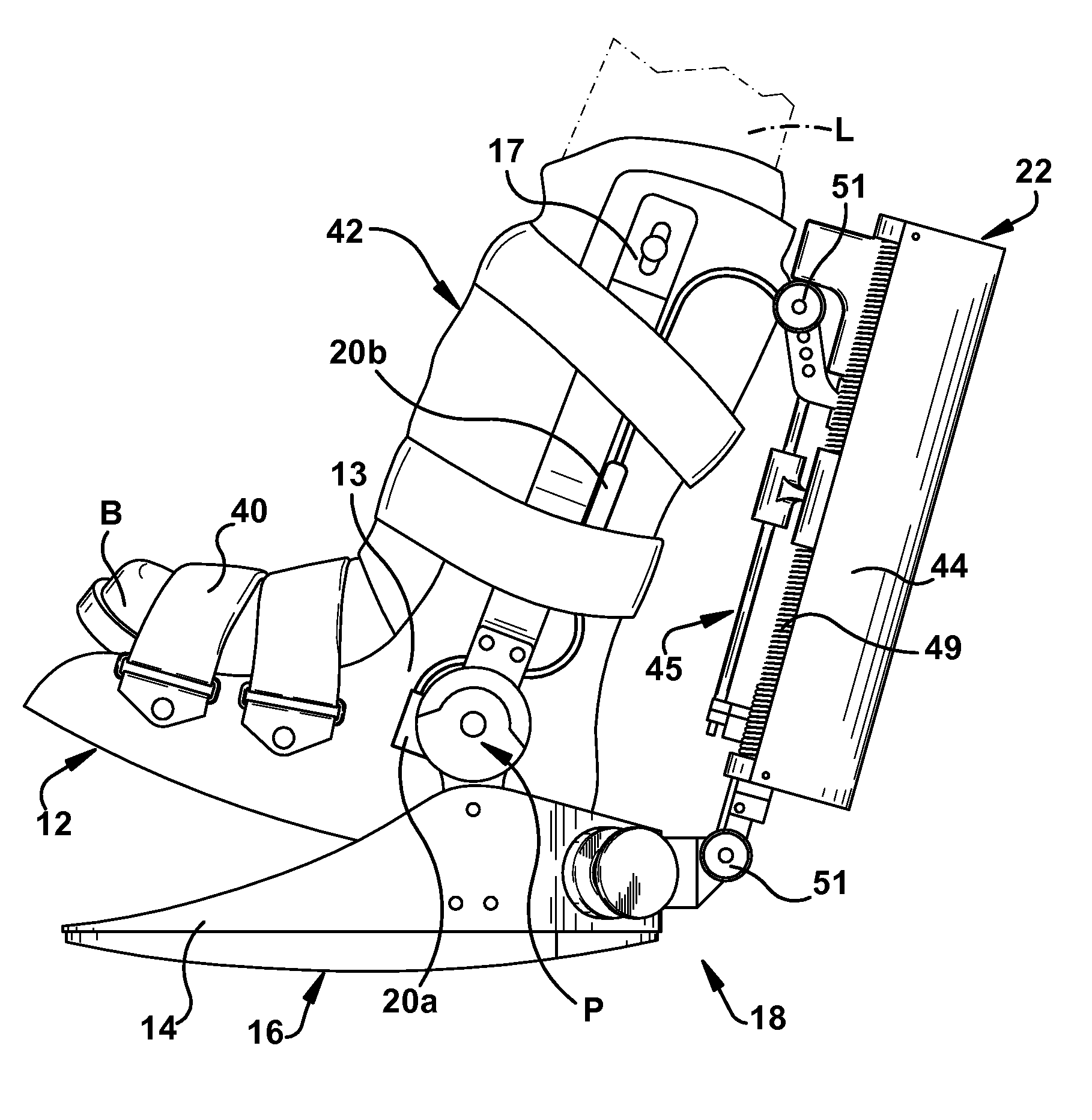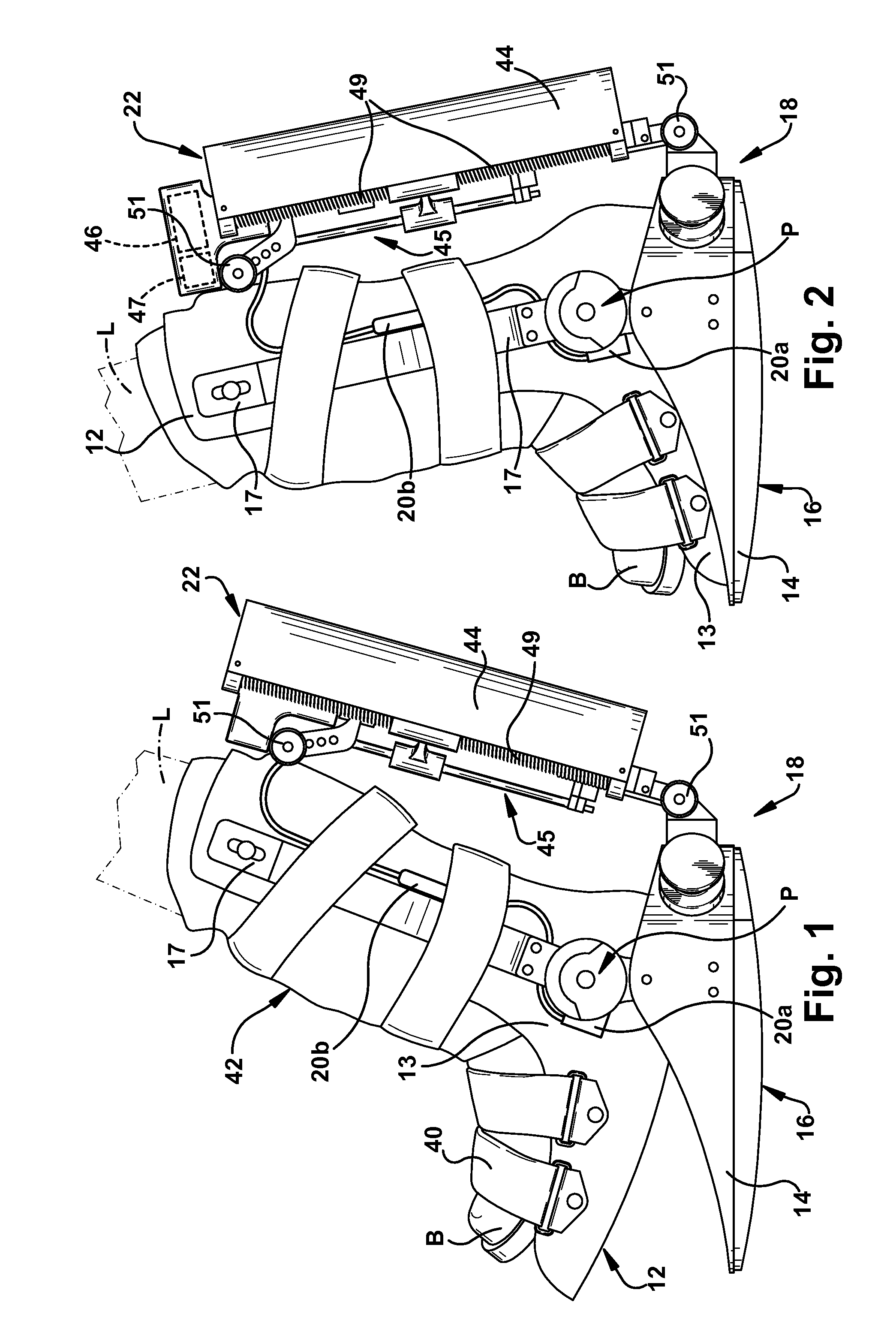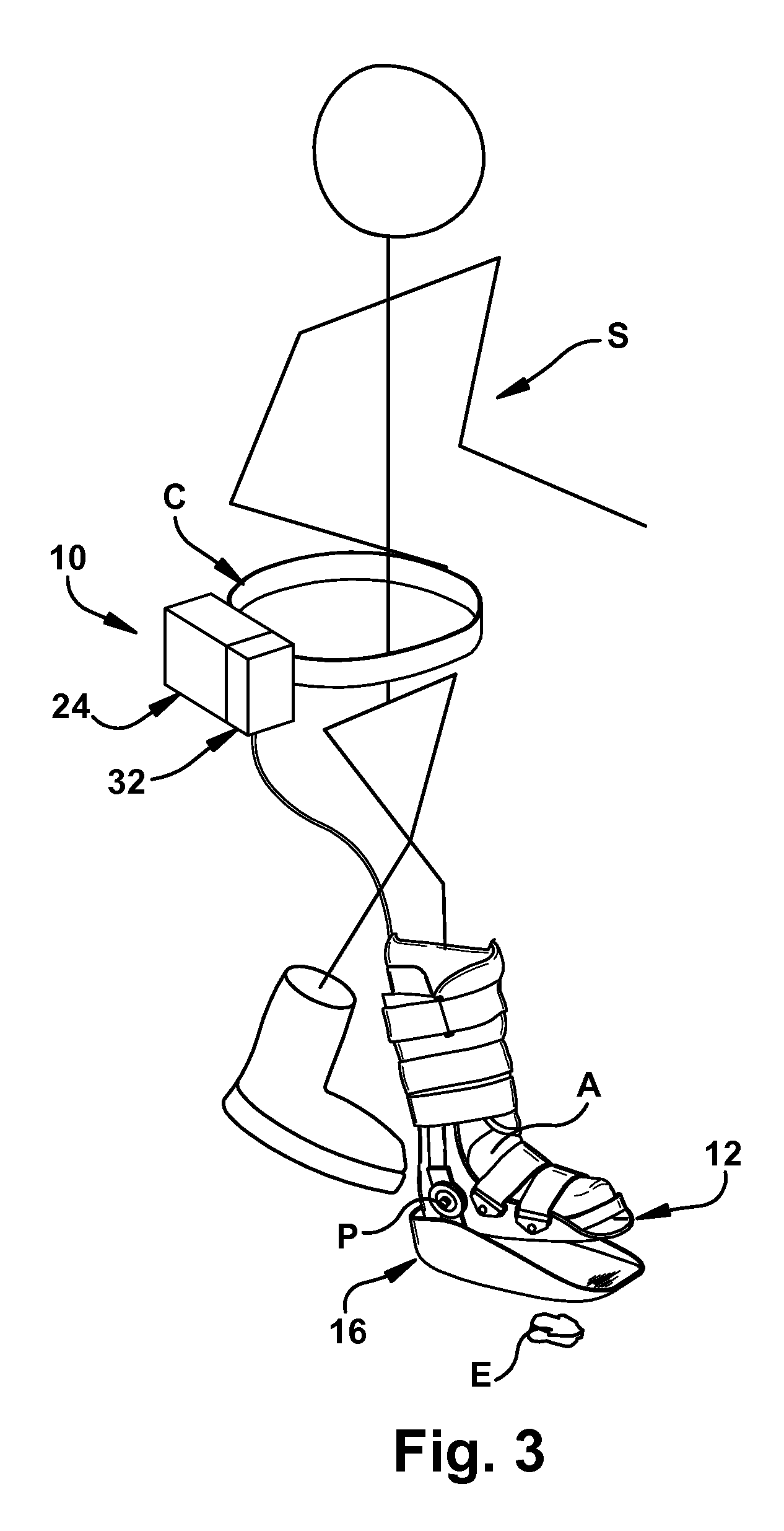Neuromorphic controlled powered orthotic and prosthetic system
a powered orthotic and prosthetic technology, applied in the field of neuromorphic controlled powered orthotics and prosthetic systems, can solve the problems of soldiers' arms and legs being exposed to the ammunition used in today's war zones, extensive soft tissue damage, and increasing the risk of further harm, so as to achieve the effect of reducing the load
- Summary
- Abstract
- Description
- Claims
- Application Information
AI Technical Summary
Benefits of technology
Problems solved by technology
Method used
Image
Examples
Embodiment Construction
[0030]The present invention provides an integrated control system, based on principles of architecture and functions of the spinal cord of primitive vertebrates for control of rhythmic movement, to sense and control an actuated powered orthotic splint or prosthetic system for the lower limb. The system is generally referenced here as a neuromorphic controlled powered orthotic and prosthetic system or “NOCS.”
[0031]The NOCS portable system and device of the present application 10, as schematically illustrated in FIG. 3, includes a custom or universal fit fixed-ankle orthosis 12 (“AFO”), with an optional above the knee attachment 14, to stabilize or immobilize an injured lower limb L or act as an ankle prosthesis, and an actuated or powered articulated false-foot 16 connected to the fixed-ankle orthosis or the prosthesis 12 to form an actuated articulated false-foot orthosis 18 (“AAFO”). Associated with or mounted on the actuated articulated false-foot 16 or AAFO 18, or in or on the bo...
PUM
 Login to View More
Login to View More Abstract
Description
Claims
Application Information
 Login to View More
Login to View More - R&D
- Intellectual Property
- Life Sciences
- Materials
- Tech Scout
- Unparalleled Data Quality
- Higher Quality Content
- 60% Fewer Hallucinations
Browse by: Latest US Patents, China's latest patents, Technical Efficacy Thesaurus, Application Domain, Technology Topic, Popular Technical Reports.
© 2025 PatSnap. All rights reserved.Legal|Privacy policy|Modern Slavery Act Transparency Statement|Sitemap|About US| Contact US: help@patsnap.com



